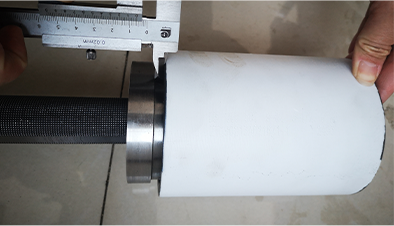- Afrikaans
- Albanian
- Amharic
- Arabic
- Armenian
- Azerbaijani
- Basque
- Belarusian
- Bengali
- Bosnian
- Bulgarian
- Catalan
- Cebuano
- Corsican
- Croatian
- Czech
- Danish
- Dutch
- English
- Esperanto
- Estonian
- Finnish
- French
- Frisian
- Galician
- Georgian
- German
- Greek
- Gujarati
- Haitian Creole
- hausa
- hawaiian
- Hebrew
- Hindi
- Miao
- Hungarian
- Icelandic
- igbo
- Indonesian
- irish
- Italian
- Japanese
- Javanese
- Kannada
- kazakh
- Khmer
- Rwandese
- Korean
- Kurdish
- Kyrgyz
- Lao
- Latin
- Latvian
- Lithuanian
- Luxembourgish
- Macedonian
- Malgashi
- Malay
- Malayalam
- Maltese
- Maori
- Marathi
- Mongolian
- Myanmar
- Nepali
- Norwegian
- Norwegian
- Occitan
- Pashto
- Persian
- Polish
- Portuguese
- Punjabi
- Romanian
- Russian
- Samoan
- Scottish Gaelic
- Serbian
- Sesotho
- Shona
- Sindhi
- Sinhala
- Slovak
- Slovenian
- Somali
- Spanish
- Sundanese
- Swahili
- Swedish
- Tagalog
- Tajik
- Tamil
- Tatar
- Telugu
- Thai
- Turkish
- Turkmen
- Ukrainian
- Urdu
- Uighur
- Uzbek
- Vietnamese
- Welsh
- Bantu
- Yiddish
- Yoruba
- Zulu
Understanding Bull Plug Pressure Ratings for Safe and Effective Use
Understanding Bull Plug Pressure Ratings Importance and Applications
Bull plugs, often used in various industrial and engineering contexts, serve as essential components to secure and seal pressure systems. Particularly in high-pressure environments, understanding the pressure rating of these plugs is crucial for both safety and operational efficiency. A bull plug pressure rating indicates the maximum pressure that the plug can withstand without failure, which is vital for ensuring the integrity of the system it is part of. Failure to adhere to these ratings can lead to catastrophic consequences, including leaks, system failures, or even explosions.
The pressure rating of a bull plug is typically defined by industry standards and varies based on material, design, and dimensions. Common materials used for manufacturing bull plugs include stainless steel, brass, and plastic, each offering different pressure capacities and resistance to corrosive environments. For instance, stainless steel bull plugs tend to have higher pressure ratings due to their superior strength and durability compared to plastic components.
In the industrial field, bull plugs are frequently found in oil and gas operations, water treatment plants, and chemical processing facilities. In these applications, the ability to manage high pressures is crucial. For example, in an oil and gas pipeline, a bull plug must be able to handle significant pressure fluctuations that occur during the extraction and transport of hydrocarbons. If a plug fails due to exceeding its pressure rating, it can lead to major environmental hazards and financial losses for companies.
bull plug pressure rating

Moreover, the application of bull plugs extends to HVAC systems, where they are used to manage airflow and pressure within ductwork. In these situations, ensuring that the bull plugs used meet the required pressure ratings is important for maintaining system efficiency and preventing air leaks, which can result in energy losses and increased operational costs.
Before selecting a bull plug for a specific application, it is essential to conduct a thorough assessment of the operational environment. Factors to consider include the maximum working pressure, temperature variations, and chemical compatibility. Manufacturers typically provide detailed specifications, including pressure ratings for their products, allowing users to make informed decisions based on their specific needs.
In summary, bull plug pressure ratings are not merely numerical values; they represent the threshold of safety and functionality within pressure systems. Properly understanding and applying these ratings is crucial for engineers and technicians in various fields. By adhering to recommended pressure ratings, industries can enhance safety, optimize performance, and reduce the risk of failures that could have severe consequences. Whether in oil and gas, chemical processing, or HVAC systems, pressure ratings play an indispensable role in the effective management of pressure systems. Ensuring that the chosen bull plug is adequately rated for its intended use is fundamental for maintaining operational integrity and safety.
-
Tubing Pup Joints: Essential Components for Oil and Gas OperationsNewsJul.10,2025
-
Pup Joints: Essential Components for Reliable Drilling OperationsNewsJul.10,2025
-
Pipe Couplings: Connecting Your World EfficientlyNewsJul.10,2025
-
Mastering Oilfield Operations with Quality Tubing and CasingNewsJul.10,2025
-
High-Quality Casing Couplings for Every NeedNewsJul.10,2025
-
Boost Your Drilling Efficiency with Premium Crossover Tools & Seating NipplesNewsJul.10,2025







